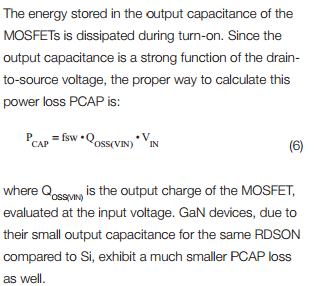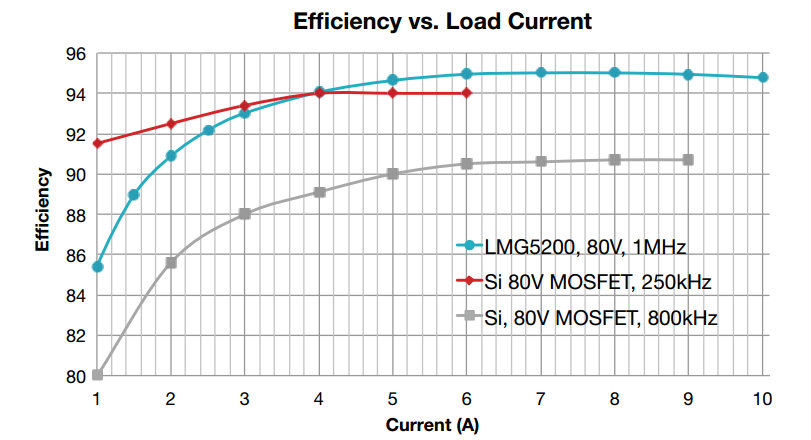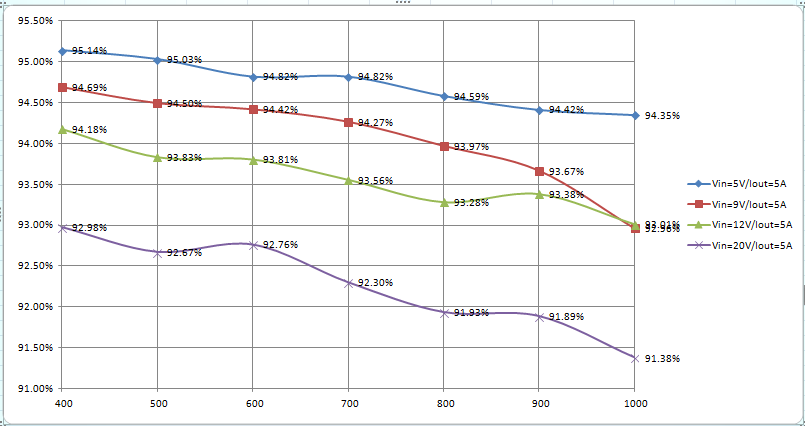these days i caculated the PCAP loss of the LMG5200,if i use the forum above, then the PCAP loss is:
Pcap = 1*20*20*10^-3 = 0.4W (where Fsw = 1MHz, Vin = 20V, Qoss = 20nC)
Am i right???
if this is true,then when the output Power is 20W,and the efficiency is 95%,so the PCAP loss is the main loss of the total loss





